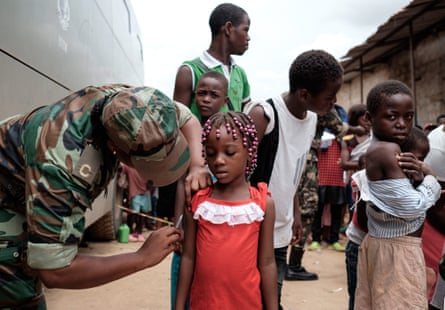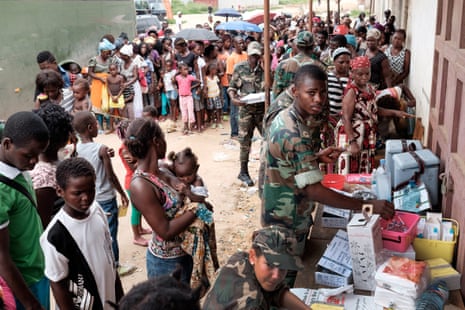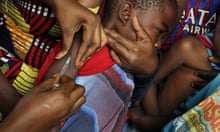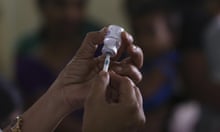Angola was declared polio-free by the World Health Organisation (WHO) in December – a public health triumph. It set the stage for a similar declaration in Nigeria, a major landmark in the global battle against this disabling disease.
But while Angolan officials are rightly proud of the declaration, the recent yellow fever outbreak in the southern African country underscores the challenges governments and public health workers face as they seek to expand routine immunisation programmes that save lives.
The problems and barriers to immunisation are well known – as are the solutions. But what has been lacking is the political will to devote the money and manpower needed to make it all work. These hurdles are likely to grow as both Angola and Nigeria, which only recently reaped huge oil windfalls, face drastic belt-tightening in the face of collapsing world energy prices.
The yellow fever outbreak in Angola, which has killed more than 240 people, emphasises the need to reinforce the WHO’s expanded programme on immunisation, even in countries that are making sustained progress against polio. Cases of yellow fever have also been detected across the border in the Democratic Republic of the Congo, where 21 people have died since January.
Yellow fever and polio infections are both of viral origins and do share a common risk factor – the environment. While polio is transmitted predominantly from poorly disposed faecal waste, yellow fever is transmitted by the bite of an infected mosquito – most commonly Aedes aeqypti.
The resurgence of yellow fever is directly attributable to a sharp drop in health funding. The government’s revised budget for health this year is about 33% lower than its allocation in 2015, making vaccines more difficult to purchase. Spending was also slashed for public sanitation and mosquito control, leaving piles of uncollected waste lying around in poorer areas – fertile conditions for viruses to breed and spread.
Both polio and yellow fever can be prevented with vaccination. Angola reported its last polio case in July 2011. But public health experts warn that the country remains at risk as high numbers of children fail to receive the oral polio vaccine (OPV). And Angola has been here before: the country wiped out polio in 2001, but the disease re-emerged in 2005.
Polio remains a devastating and potentially fatal infectious disease. Although there is no cure, there are safe and effective vaccines. As long as the wild polio virus, which can cause lifelong paralysis or even death, circulates anywhere on the globe, all polio-free countries risk reinfection through an “importation” of the virus.
Nigeria, the last country with polio cases in Africa, was removed from the list of endemic countries in September after more than a year of zero confirmed cases of wild polio virus. Now only two countries, Afghanistan and Pakistan, have endemic polio.

But, as yellow fever demonstrates, the endgame will be hard fought. The government needs to show its commitment by investing at least $60 (£42.50) per child per year as well as earmarking significant funds to support newborn and child health; as opposed to its current investment of less than 15% (2001 Abuja target) of its national annual budget to health. This investment could help to ensure that at least 90% of Angolans are fully vaccinated by their first birthday – sparing them the risk of both yellow fever and polio, among a host of other communicable diseases.
Vaccines don’t just save lives – their benefits extend far beyond health. When children are vaccinated, they have fewer illnesses, which ultimately leads to reduced healthcare costs for families and the health system. Vaccinated children are more likely to stay in school, strengthening the economic outlook for themselves and their communities. Vaccines are relatively cheap and amazingly effective.
We can turn this yellow fever outbreak into an opportunity by redoubling efforts to improve the overall vaccination programme. Yellow fever kills an estimated 60,000 people globally each year, and because it is carried by mosquitoes it is not a quick target for total eradication. But polio is – and vaccines are getting us there.
- Dr Sam Agbo is chief of survival and development for Unicef Angola






